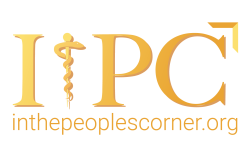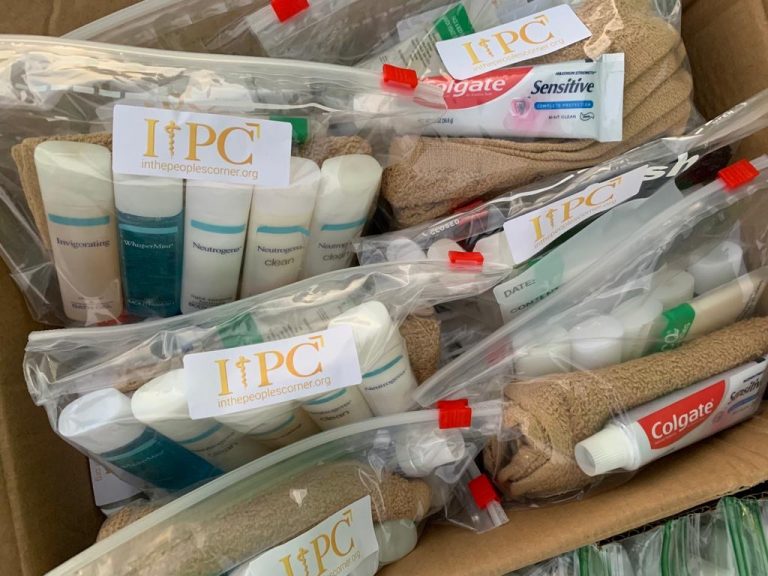Safety
In The People’s Corner is committed to safeguarding the lives of Los Angeles’ most vulnerable populations. Through harm reduction education and the distribution of essential items like kits, hand sanitizer, face masks, shoes, and clothing, we aim to create a safer environment for people experiencing homelessness (PEH).
Protecting Lives, Promoting Health
Protecting Lives, Promoting Health
The mortality rate among people experiencing homelessness in Los Angeles has risen by 55% from 2019 to 2021, with drug overdoses accounting for 37% of deaths. Together, we can work to reverse this trend and save lives.

Empowering Through Knowledge and Tools
Empowering Through Knowledge and Tools
Harm reduction is a compassionate, evidence-based approach that focuses on minimizing the risks associated with drug use and homelessness. Our harm reduction efforts include:
- Distributing Narcan
- Educating communities on overdose prevention strategies.
- Offering needle disposal stations and harm reduction kits.
We believe in providing life-saving resources while preserving the dignity and autonomy of those we serve.
Find Naloxone Near You
Find Naloxone Near You
In The People’s Corner (ITPC) is a part of California Department of Health Care Services Naloxone Distribution Project enabling ITPC to provide Naloxone to our clients.
You can also access Naloxone (Narcan) in your community using the National Community-Based Naloxone Finder below created the National Harm Reduction Coalition . This vital resource connects individuals with life-saving medications and overdose prevention tools.
The Naloxone Finder is intended for people who use drugs to access naloxone in their community.
While many of the programs listed offer additional harm reduction supplies (e.g. syringes, safer smoking kits, drop-in centers), the National Harm Reduction Coalition has vetted the programs for community-based naloxone that is free and intended for people who use drugs.
National Harm Reduction Coalition updates this map on a bi-monthly basis and have included space for programs to update their information regarding specific requirements or changes due to COVID-19.
Finder provided by the National Harm Reduction Coalition
More Resources
New Public Health Report Shows Sharp Rise in Mortality Among People Experiencing Homelessness
LA County Report: Rising Mortality Among People Experiencing Homelessness
Mortality among people experiencing homelessness (PEH) in LA County increased 55% from 2019 to 2021, with 2,201 deaths recorded in 2021.- Drug Overdose: Leading cause of death (37%), driven by fentanyl, with rates doubling since 2019.
- Other Causes: Coronary heart disease (14%), traffic injuries (8%), homicides (4%), and COVID-19.
- Disparities: PEH were 3.8 times more likely to die than the general population. Overdose deaths were 39 times higher, with white males most affected.
Recommendations
- Expand harm-reduction services, naloxone distribution, and recovery housing.
- Improve care coordination and address traffic fatalities through infrastructure changes.
Homelessness linked to higher risk of death from COVID in L.A. County, study shows:
A study by USC, UCLA, and the LA County Department of Public Health found that people experiencing homelessness in Los Angeles County were 2.35 times more likely to die from COVID-19 than those in the general population. Between January 2020 and November 2021, 256 homeless individuals died from COVID-related causes, a rate more than twice that of the general population. The study attributes this higher risk to the accelerated aging of individuals experiencing homelessness, making them more vulnerable to diseases like COVID-19. Researchers suggest that homelessness is a “housing-sensitive condition,” and more aggressive housing and prevention efforts are needed to address the disparities. The findings also highlight that younger homeless individuals (ages 35-44) had an especially high risk of COVID death. The study also noted that while homelessness increased the risks, racial disparities in COVID mortality were already high among housed Black and Hispanic populations.
The Unmet Health Care Needs of Homeless Adults: A National Study
A national study on the unmet health care needs of homeless adults found that 73% reported at least one unmet need, with the most common being the inability to obtain medical care (32%), prescription medications (36%), mental health care (21%), eyeglasses (41%), and dental care (41%). Factors such as food insufficiency, out-of-home placement as a minor, vision impairment, and lack of health insurance were significant predictors of unmet health needs. Individuals who had been employed in the past year were more likely to be uninsured and report unmet medical and prescription needs. The study emphasizes the need for expanded health insurance and addressing the unique challenges of homelessness to improve healthcare access for this vulnerable population.




